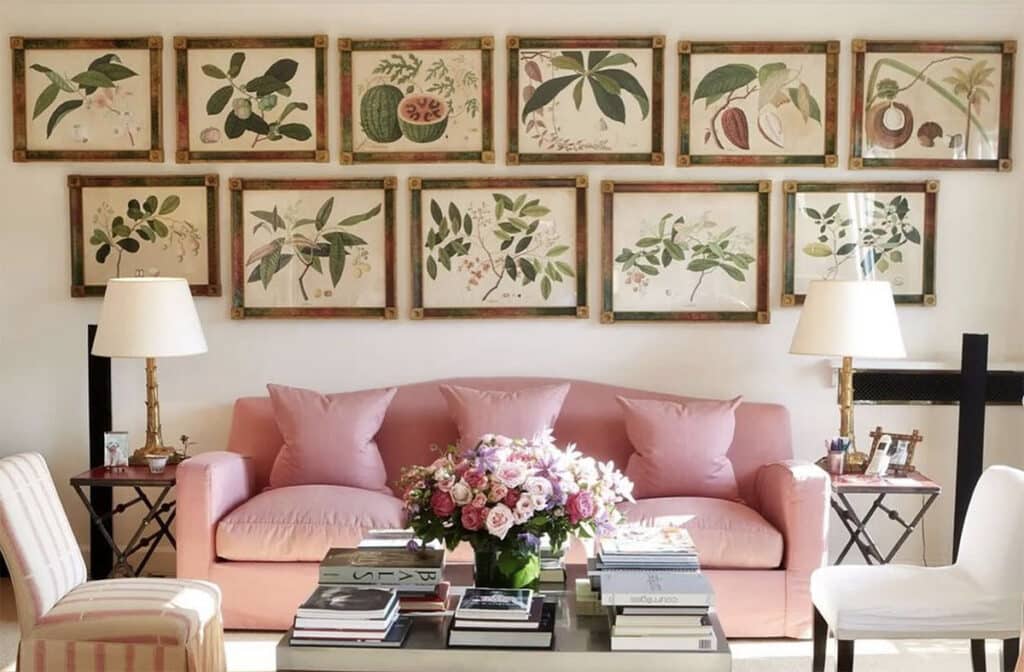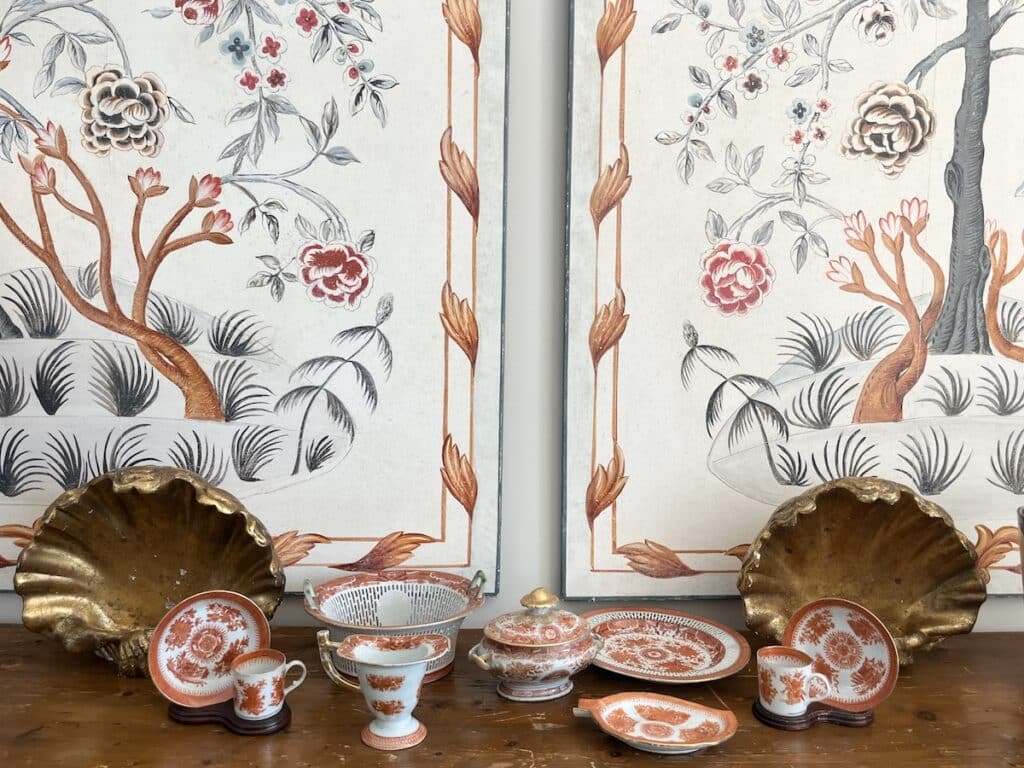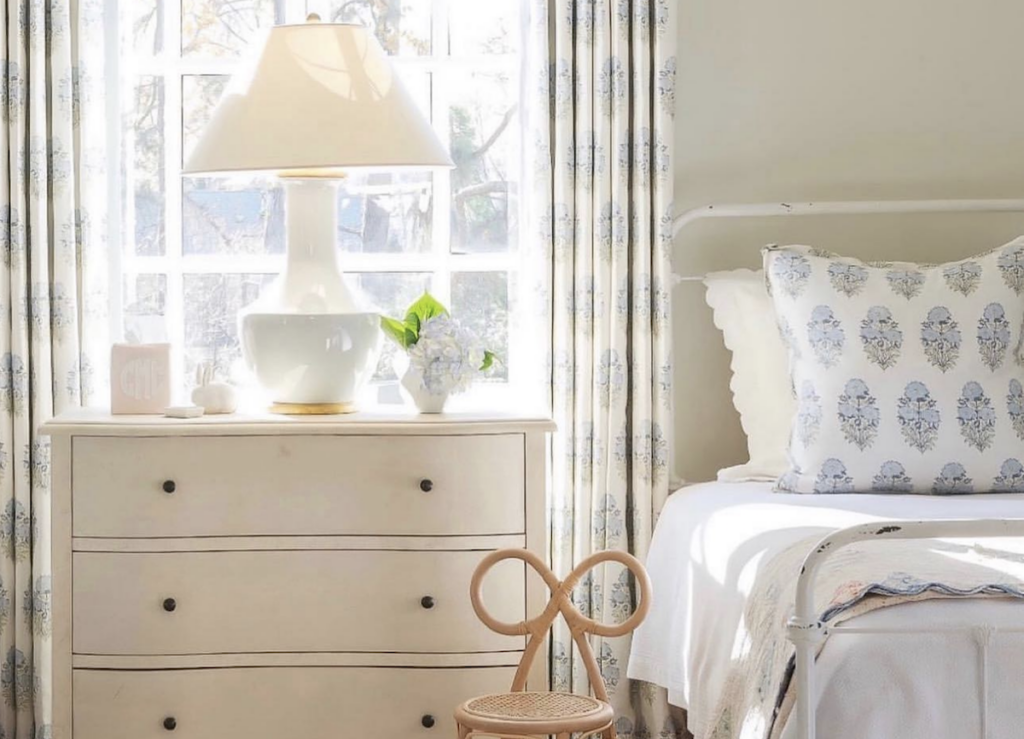Femme Botanicale

A Captivating & Beautiful Blend of Art and Science
Last week, at a photo shoot for our upcoming multi-seller collection, Anna and I happened upon a beautiful set of four antique botanical prints that turned out to be attributed to Clarissa W. Munger. So…cue the rabbit hole!
But wait, let’s take a step, or a hop, back. At Town & Sea, we’ve had the privilege of selling numerous beautiful botanicals of all ages and subjects, from flowers and birds to sea shells and herbs.
This recent discovery of Clarissa W. Munger’s botanicals seemed like the perfect opportunity to delve into the fascinating origins and history of botany and, thus, botanicals.
This study was initially used to determine whether different herbs and plants were edible, poisonous, or medicinal.
It has been called one of the first human endeavors of investigation. Once humanity became more mobile or seafaring, it evolved into a study of plants, herbs, and animals from around the world. These works have a rich and intriguing past. As Lordfords Antiques wrote in Antique Botanical Prints: Where Science Meets Art, “We have seen botanical printing evolve from a utilitarian means to an end to a powerful academic resource. Not only do these prints represent a long history of scientific discovery, but they also have immense decorative power. You can hardly escape a wall of prints whilst flicking through an interiors magazine.”
While the Golden Age of botanical prints is said to be from 1750-1850, in home decor, it has been an on-again, off-again affair. At one point in decor, botanicals may have fallen out of favor (for some), maybe seeming a bit old-fashioned— but when you learn a bit about the artists and their origins, you will most certainly have a different perspective.
For example, Elizabeth Blackwell, who lived in the 18th century, was one of the first botanical illustrators to draw, etch, engrave, and hand-color all of her plates; she was also the first female to produce a publication for scientific and commercial use. “A Curious Herbal” was a go-to for physicians and apothecaries for many years. Her work was, and is, accurate and beautiful.
Yes, botanicals were intended to be used as a tool for medicine, herbalists, and gardeners, although the reason behind her success is notable; you see, her neer do well husband, Mr. Alexander Blackwell, landed in debtor prison. So, out of necessity, Elizabeth tasked herself with producing the first definitive handbook for medicinal plants. Taking to botanicals out of financial desperation, it is said that her pain-staking care is a common trait in so many botanical artists; add in a hubby in prison, and boom!
There is nothing fuddy-duddy about this Elizabeth, nor her botanicals – she was a BOSS! And just as a reminder: in the 18th century, women couldn’t vote, own land while married, attend university, wear PANTS!, and any woman who was considered argumentative or radical may be labeled a witch (and that was SO FAR from a good thing in the 1700s, trust me).
Of course, many famous men drew and studied botany; some better-recognized names include Pierre-Joseph Redouté, Basilius Besler, William Thomas Greene, and John Miller, to name but a few.
Town & Sea was delighted to feature some of Mr. Greene’s popular parrots in our Park Avenue Pied-à-Terre Collection. Although being that the impetus for this deep dive was a woman, and this is a women-run business, we are going to focus on the ladies from here on out!
Clarissa W. Munger Badger
So, cut to this week’s fun discovery: Clarissa W. Munger Badger (1806-1889). Not only was she from the States, but she was a local! She was born in East Guilford, CT, just a few miles from where we were curating. She comes from a family of artists and academics; Clarissa focused on botanical art, while her siblings followed in their accomplished father’s footsteps in portraiture. And now, this fortuitous path has led this old bird to happily dig and learn.
According to the Madison Historical Society, Clarissa’s book, Wildflowers: Drawn and colored from Nature, a book reviewer in the popular monthly magazine Hours at Home (December 1866) declared that the work was “without exaggeration, a most unique, highly artistic and gorgeous affair – a work that reflects great credit on the artistic taste of the country, as well as on the genius and industry of the author.” Set alongside these botanicals were poems, and “…the poems themselves are believed to have been penned by Clarissa, with an additional introductory poem by Lydia Sigourney. The poet Emily Dickinson owned a copy of this book, gifted to her by her father.” Again, boss women — doing boss things. Thanks, ladies!
So now, for expert advice on the use of botanicals with regard to decor or collecting, I return to some sage advice from Lordfords Antiques: “Fascinating botanical prints bring a sense of the natural world into our interiors, and prints will certainly last longer than a fresh bouquet! The magic of botanicals lies in the blending of art and science. The styling opportunities for a set of prints are endless. Whether you have a full set of ferns or just a couple of floral engravings, botanicals are a wonderful decorative accent. Choose prints with subjects that appeal to you and a story that intrigues you. The fundamental rule of collecting prints is to source ones you will enjoy looking at every day and to put them where you will see them the most. Create a staircase gallery wall you will walk past daily, or cluster them together at the end of a hallway.”
Anna and I have had the joy of working with and admiring from afar so many talented designers over the past 5+ years who understand the power of these unintentional home decor essentials—be it flora, fauna, or birds. We cannot get enough of the beautiful ways they have expertly styled them.
What might you do with these pretty studies in flora? Does knowing that a brilliant and multi-talented woman created and published them over 120 years ago make them more enticing? We sure think so!
As always, thank you for stopping by!
Betsy


